Having been described in 1908 and being the eponymous ankylosaurid, Ankylosaurus has long been a staple of dinosaur toys. Originally known from rather fragmentary material, reconstructions of this dinosaur historically evolved from Stegosaurus-like before the tail-club was known, to the version that was made familiar by Rudolph Zallinger’s 1947 Age of Reptiles mural and the 1964 World’s Fair model, with their nodosaur-like spikes, sprawling limbs, and dragging tail-clubs. These became the basis for many depictions of Ankylosaurus, including toys, until more complete, closer relatives were found for reference. Unfortunately, the Jurassic Park/World franchise has carried many of these inaccuracies over to the present day.
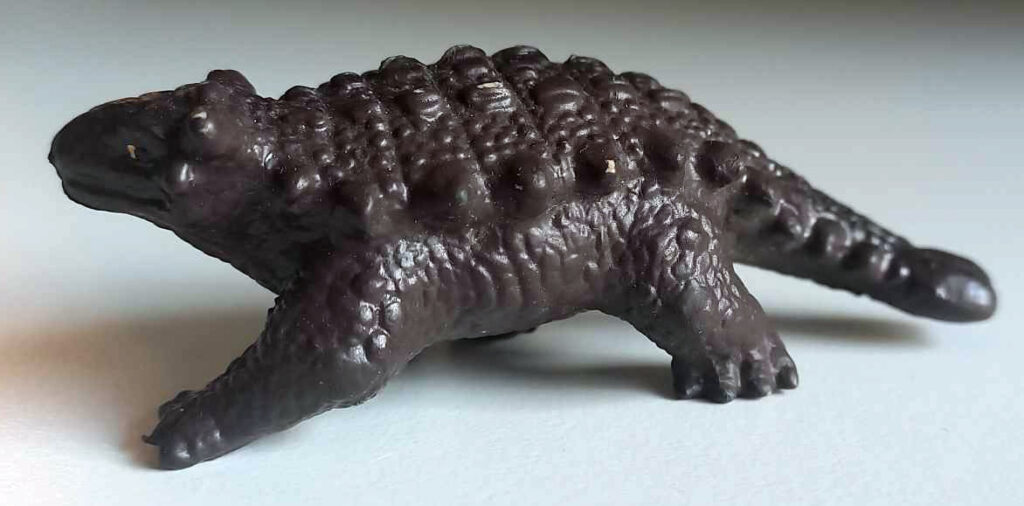
That leads us to the subject of this review, the small Bullyland Ankylosaurus which was apparently produced in 1987, a time where ankylosaurids were better known, yet this still looked like a throwback to the 1960s. The limbs are obviously very sprawling, giving it a squat posture, and the tail is lowered so that the club almost touches the ground. The osteoderms lining the flanks are not as pointy and nodosaur (specifically Edmontonia)-like as in the older depictions, but I suspect that was simply to make the figure less dangerous for kids to handle.
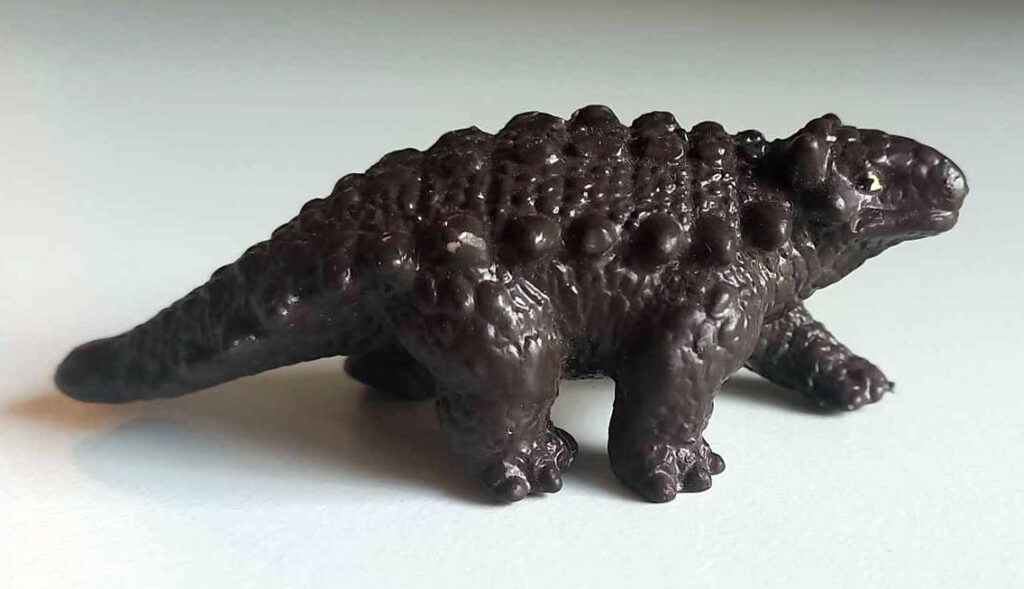
A rather strange feature is that the tail-club only consists of two large, paired osteoderms, though a complete club was known by 1910, showing that it had two smaller osteoderms at the tip too. I think the World’s Fair model may have had a similar club, but I can’t find good photos of it, so it’s difficult to compare. Either way, it’s rather simplified compared to the real deal, and the tail itself also seems to be too short and thick. The length of the tail seems similar to early depictions of Scolosaurus, which for some reason was depicted with a very short tail and a tail-club with spikes on it. The tail of the first known specimen of that dinosaur only preserved the basal part of the tail, which presumably led to this interpretation.
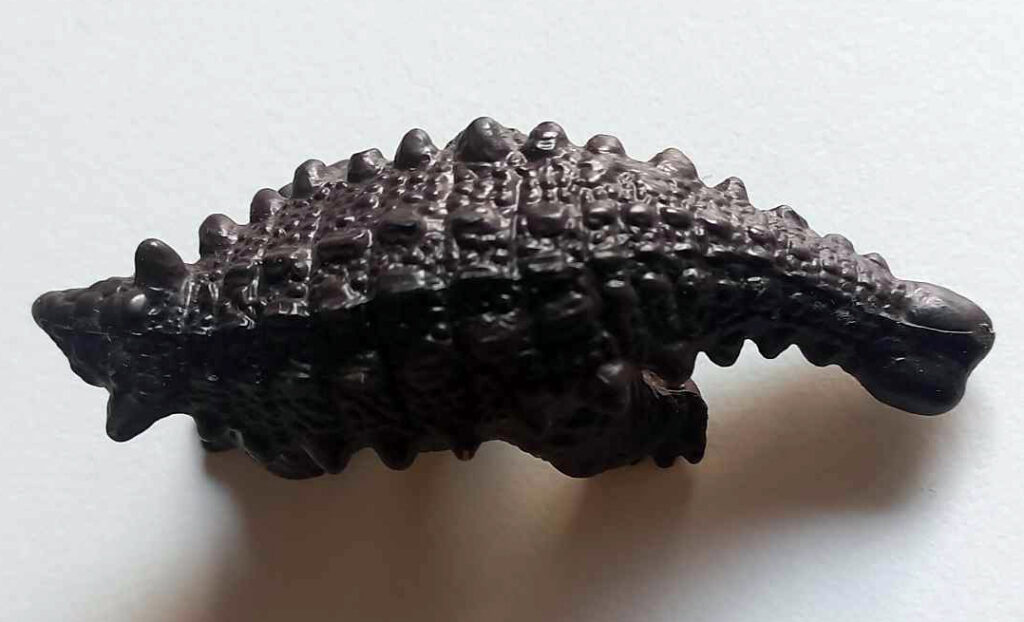
The skull of Ankylosaurus was also completely known from a very early stage, which means it should be fairly correct here, right? Well, sort of; it seems to have the right number of horns and bumps in more or less the right places, they’re just pointing in wildly different directions from what’s known from the fossils. While the horns behind the eyes and on the “cheeks” pointed backwards and up and down in the real animal, respectively, here they point to the sides and almost towards the front! The upper horns also seem to be larger than the lower, though the opposite was true. The neck also lacks the cervical half-ring armour, but their exact configuration has long been uncertain, with the most recent publication suggesting two were present, as in close relatives. In fact, this figure barely even has a neck…
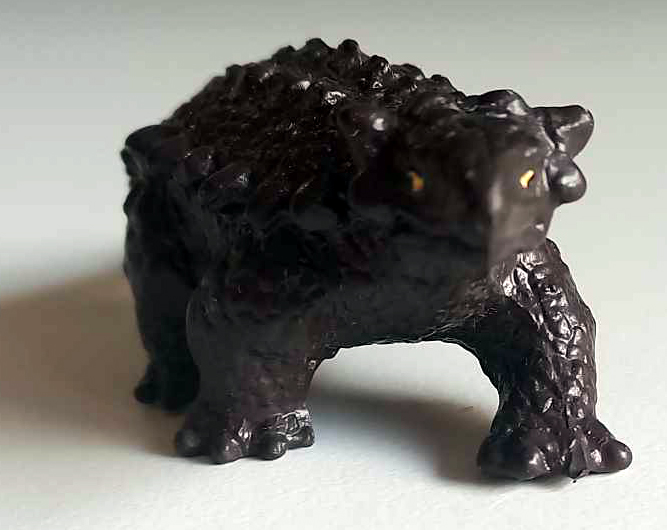
Apart from the obvious inaccuracies, the figure is instantly recognisable as an ankylosaur, but perhaps not clearly as Ankylosaurus itself, not having the right shape of the head or tail-club. Like some of the other small Bullyland figures, there is also something mammalian about it which is hard to describe, perhaps it’s the pudgy shape and expressive eyes. Its pose looks like it’s happily waddling along, and the body does look sufficiently broad. The overall texture also seems appropriately scaled and osteoderm-covered.
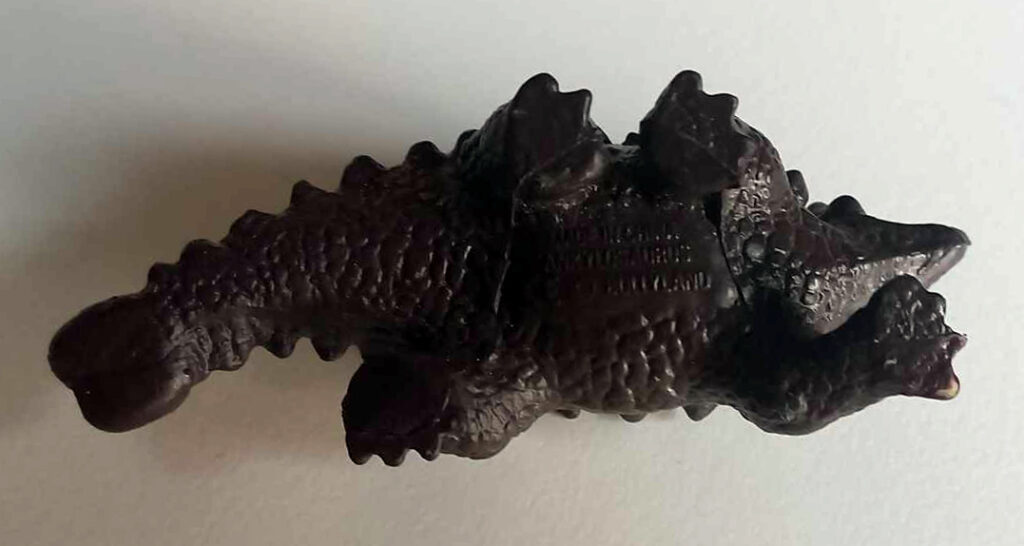
The figure is 8 cm from snout to tail-club tip, and it’s only about 2.5 cm tall. As many of the other small Bullyland figures, and unlike most other dinosaur toys, the figure is very dark, almost black or dark grey. The only paint seems to be the yellow eyes with black pupils that look back, giving it an adorable look from the side, but a derpy look from the front. I should note that this is apparently only one of various colour variants, there being at least a light greyish and reddish brown version as well.
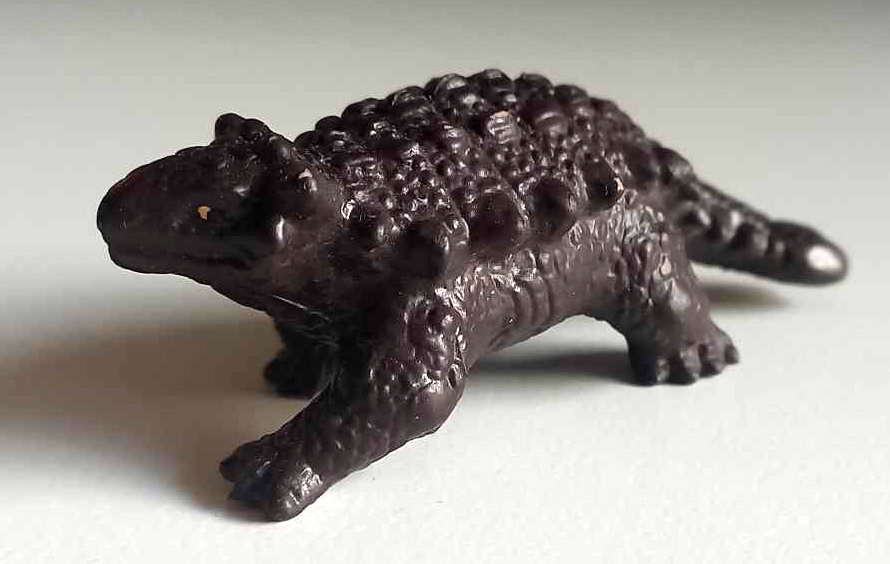
So to sum up, I think this is a pretty cute figure reflecting some interesting historical trends in Ankylosaurus restorations. While of course far from anatomically accurate, I think old toys that reflect older hypotheses when they were still relevant are at least worthy for this, unlike those that are just inaccurate due to a total disregard of current science (*cough* Jurassic World *cough*). And, looking at the last picture, who can resist that side-eyed smirk anyway?
Disclaimer: links to Ebay and Amazon on the DinoToyBlog are affiliate links, so we make a small commission if you use them. Thanks for supporting us!




Great review of a charming figure. I love this little guy. 4 stars! I didn’t give it five because of the paint job